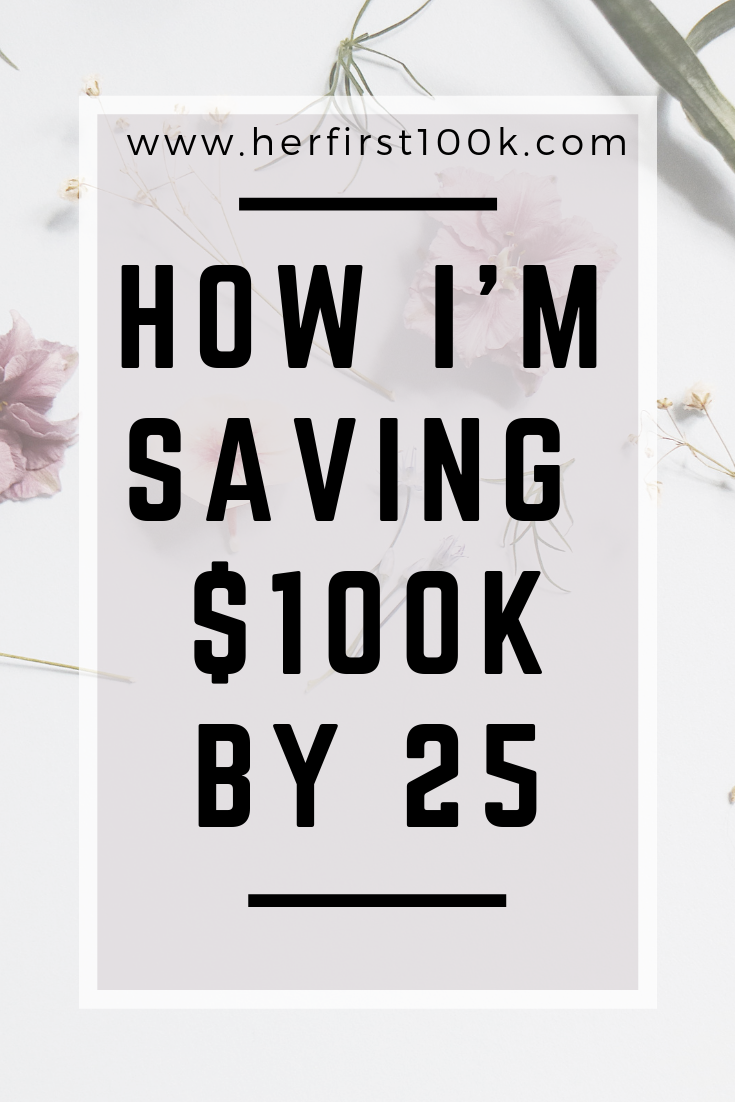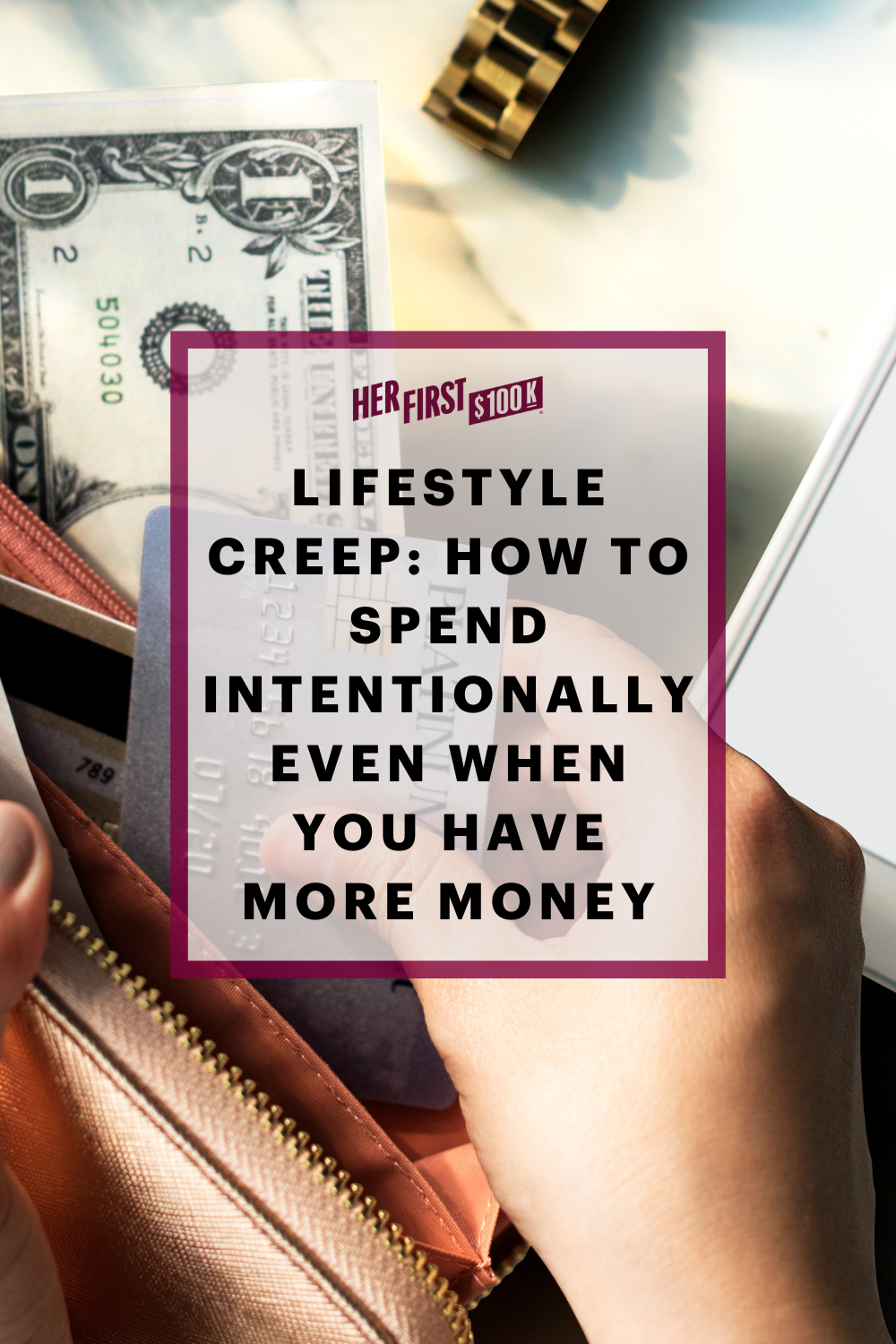The following article may contain affiliate links or sponsored content. This doesn’t cost you anything, and shopping or using our affiliate partners is a way to support our mission. I will never work with a brand or showcase a product that I don’t personally use or believe in.
My Journey to Saving $100K
They say the first $100K is the hardest. And it’s definitely not for the faint of heart.
When I was 23, I realized that if I pushed myself — got a bit uncomfortable to save and earn more while spending less — I could hit six figures saved by the end of my 25th year.
I officially achieved that goal on Sept. 16, 2019 — over 9 months ahead of schedule!
Saving six figures is a huge feat, but I feel especially proud of my journey — I live and work in Seattle (one of the most expensive cities in the U.S.) and have never made above $80k a year. Here’s exactly what I did and the opportunities I’ve had to get me here.
Before we keep going – if you’re a new investor or just looking for a community to join as you begin your investing journey, we’ve built a one-of-a-kind, non-judgemental community where you can learn exactly how to invest, build wealth, and receive exclusive access to Her First $100K. Learn more here.
1. I made tens of thousands side hustling
This kick-started my journey towards six figures. In addition to saving the majority of my 9-5 salary, my first year of freelance social media marketing made me quite a bit of cash that I could immediately save. This first client honestly overpaid me for the work I ended up doing (the scope ended up being less than I thought it would be, and I also negotiated more.) I was able to establish both a SEP IRA and a fully-funded emergency fund with my earnings.
2. I started investing early
Knowing that compound interest is so important, I wanted to start investing early to have my money work for me. Once I started my first big-girl job, I opened my first Roth IRA. Starting to save for retirement at age 22, I was able to max out my Roth each year and also contribute to the SEP-IRA and a non-retirement investment account. My first job out of school had a 401(k), but you couldn’t contribute until you were there for at least a year.
Knowing I wasn’t planning on staying long — I was at that job for a year and a few months — I opened a Roth 401(k) and then rolled my earnings to my Roth IRA.
3. I graduated without student debt
This journey has not just been good choices and hard work — it’s also been a privilege. I want to acknowledge that I had a support system that helped me with college — my teachers who guided me so I could get grades that warranted a merit scholarship; and my parents for helping me start my first business at age nine (all the funds went to my college education) and also contributed their own money for my college.
I myself worked hard to make sure I graduated without debt, but my parents worked harder. I acknowledge and deeply appreciate the privilege of graduating without student debt — I wanted to honor that privilege by contributing over $30,000 of my own teenage money through my part-time jobs (3 while going to school full-time, and one in the summer) and my vending machine business. I also earned over $60,000 in merit scholarships.
4. I negotiated salary offers and raises
Negotiating, while scary, should be a collaboration, not a confrontation. Growing up, I watched my father sit on hold, patiently waiting to negotiate our cable and phone bills. I went with him to work and followed along as he closed deals and made connections. In high school, I sat in the car dealership lobby for 3 hours watching TV while my parents haggled over the price of a car.
Negotiation was always part of my life, and I grew up with parents who knew how to do it. So when I was offered my first social media freelance gig, I negotiated over $10k more than they offered. And after achieving a 20% bump at my first 9-5, I negotiated $20k more than what was offered at my next job. And $10k more at the next job. If negotiating for raises freaks you out, take my negotiation workshop!
5. I automated my savings
Automating your money not only makes your life easier, but it makes you feel like the percentage you’re saving just doesn’t exist. In Gusto (our payroll platform at my 9-5), I have a 22% of each paycheck deposited into a high-yield savings account. This savings account is purposefully at a different bank than my day-to-day checking account, so I’m less likely to withdraw from it and less likely to think about it. This “set it and forget it” level of financial freedom was something I worked hard for — through money journaling, budgeting, and conscious spending. So now, my savings amount is completely on autopilot.




